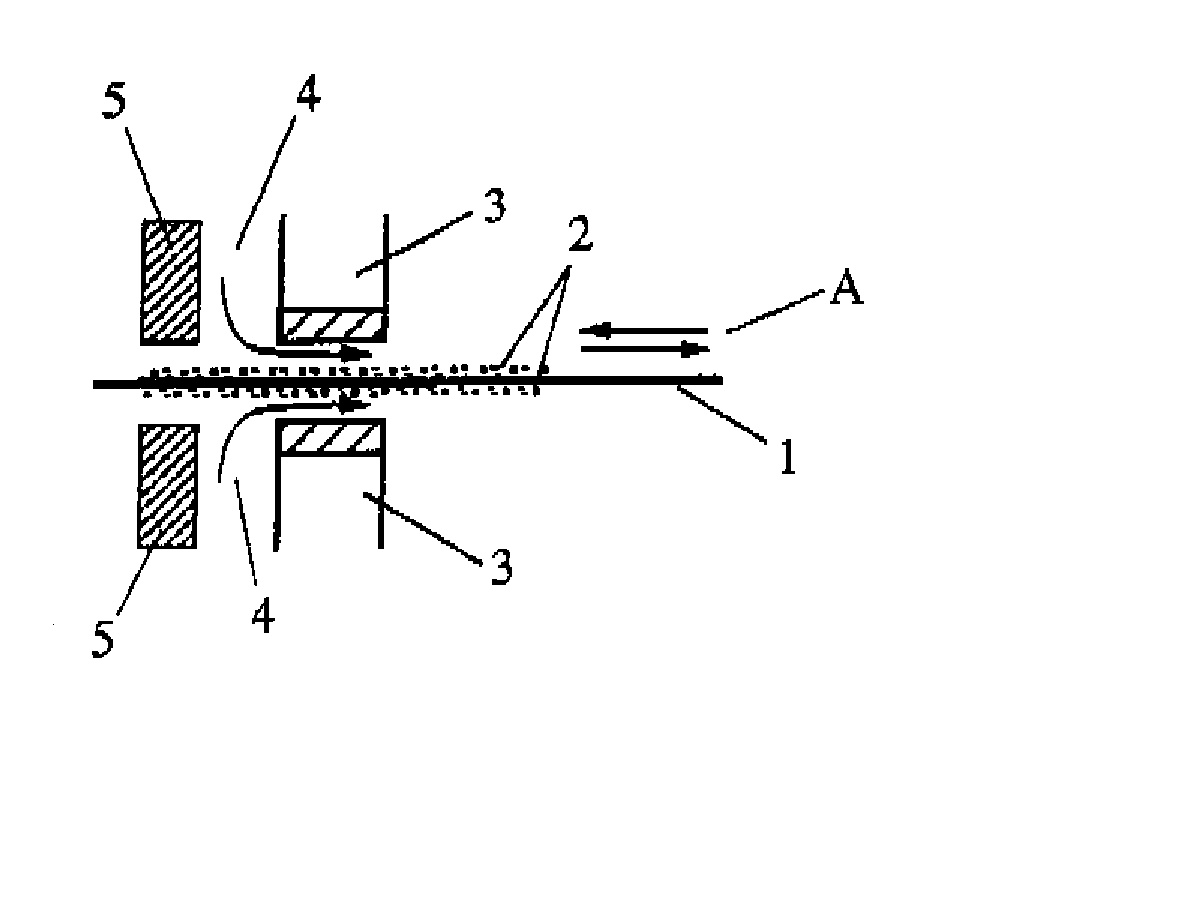Method And Device For Removing Liquids From The Surface Of A Strip
a technology of moving strips and liquids, which is applied in the direction of work treatment devices, electrostatic cleaning, cleaning processes and apparatuses, etc., can solve the problems of limiting the removal method of lubricant remains, unusable displacement of individual turns in the axial direction of the coil, and small remains of liquids previously used on the surface of the strip
- Summary
- Abstract
- Description
- Claims
- Application Information
AI Technical Summary
Benefits of technology
Problems solved by technology
Method used
Image
Examples
Embodiment Construction
[0042]FIG. 1 shows a moving strip 1, on the upper side and underside of which a liquid 2, for example lubricant, attaches. Respectively fitted above and below the strip 1 is a transducer 3. An air stream 4 is respectively generated by blowing nozzles (not represented) between the free surface of the liquid 2 and the transducer 3. The directional arrows A indicate that the air stream 4 may be directed both with and counter to the strip running direction. FIG. 2 shows that the transducers 3 arranged above the strip 1 are arranged next to one another in such a way that transducers extend over the entire width B of the strip.
[0043] For removing the liquid 2 from the surface of the strip 1, sound waves are emitted into the air stream 4 by the transducers 3, which are formed for example as piezoelectric ultrasound-transmitting probes. As a result, the air stream 4 is excited to undergo an oscillation. The air stream 4 transfers this excitation oscillation to the liquid 2 and excites the ...
PUM
| Property | Measurement | Unit |
|---|---|---|
| angle | aaaaa | aaaaa |
| thicknesses | aaaaa | aaaaa |
| thickness | aaaaa | aaaaa |
Abstract
Description
Claims
Application Information
 Login to View More
Login to View More - R&D
- Intellectual Property
- Life Sciences
- Materials
- Tech Scout
- Unparalleled Data Quality
- Higher Quality Content
- 60% Fewer Hallucinations
Browse by: Latest US Patents, China's latest patents, Technical Efficacy Thesaurus, Application Domain, Technology Topic, Popular Technical Reports.
© 2025 PatSnap. All rights reserved.Legal|Privacy policy|Modern Slavery Act Transparency Statement|Sitemap|About US| Contact US: help@patsnap.com



